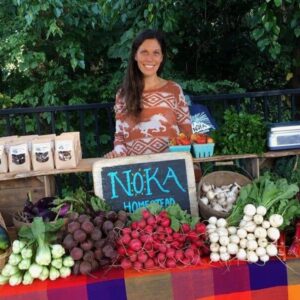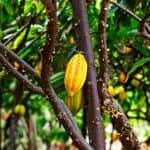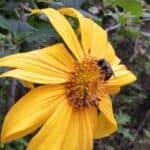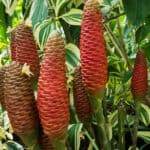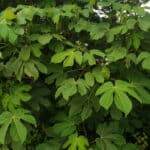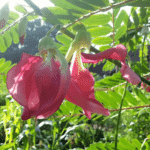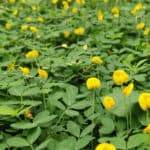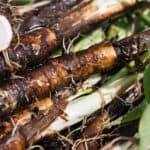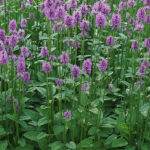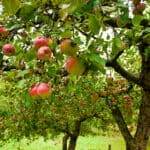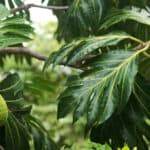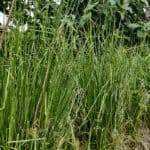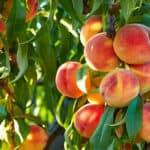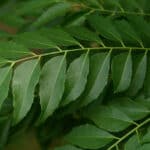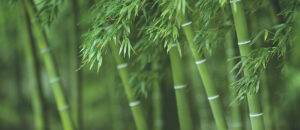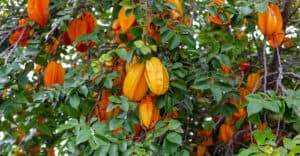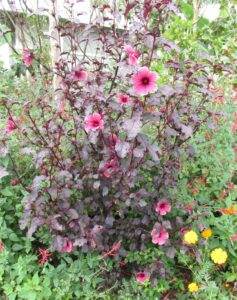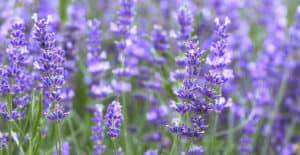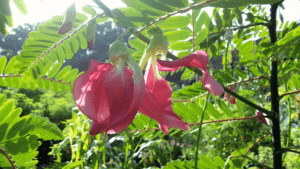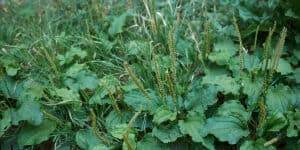Every April, when we’re tired of eating butternut squash and potatoes and are really craving fresh food, my family makes foraged miso soup. We pick any new Spring growth we can find – dandelion greens and root, garlic mustard, nettle shoots, mushrooms, wild onion – and throw it in the pot. The star of this soup (and, if I’m being honest, the reason our daughter doesn’t like it), is Burdock root. Sweet and earthy, it tastes pungent and alive, a much-needed boost of vitality after a long Michigan Winter. Many know Burdock as more of a pest than a benefit in their garden – and that’s pretty fair! We’re all familiar with the tedium of pulling its barbed burrs off of our clothing and our pets. With some oversight, however, Burdock can be managed in such a way that it really can add to a home garden or permaculture planting.
Burdock Grows to Great Heights – and Depths

Burdock, Arctium lappa, is a biennial plant (some would say a weed) in the Aster family, found commonly in lightly disturbed or untended areas: roadsides, pastures, city lots, etc. In its first year, it produces a rosette of long, veined, heart-shaped leaves (think elephant ears) – deep green on top, lighter in color and slightly fuzzy on the undersides. Leaf stems are inches long, green to a dusky pink, and resemble rhubarb. This first-year growth is supported by a slender brown taproot that, in loamy soils, can grow upwards of 3 feet long.
In its second year, Burdock puts on significant growth – and height! Plants can tower up to 10 feet tall, and have an admittedly floppy disheveled appearance. A single central stem pushes up from the center and branches widely. Those elephant ear leaves continue along the stem, but get smaller higher up. Its purple thistle-like flower is what makes Burdock immediately recognizable; that, and the Velcro-y burr that it dries into. Flower heads are globular, flattened on top, the bright flower emerging from a sphere of curved spines.
Burdock: A Benefit and a Burden
Historical records suggest that humans have long been reckoning with Burdock’s benefits – and its frustrations. Native to Europe and Asia, there are references dating back to the Middle Ages touting the medicinal wonders of the plant’s roots and leaves. Burdock’s use as a blood purifier, liver cleanser, and general detoxifier has been chronicled by the Ancient Greeks, the Chinese, and several Native American Tribes, just to name a few. Alongside those accolades, however, come descriptions like “the mischievous plant,” “robber,” and “tangle of wool.”
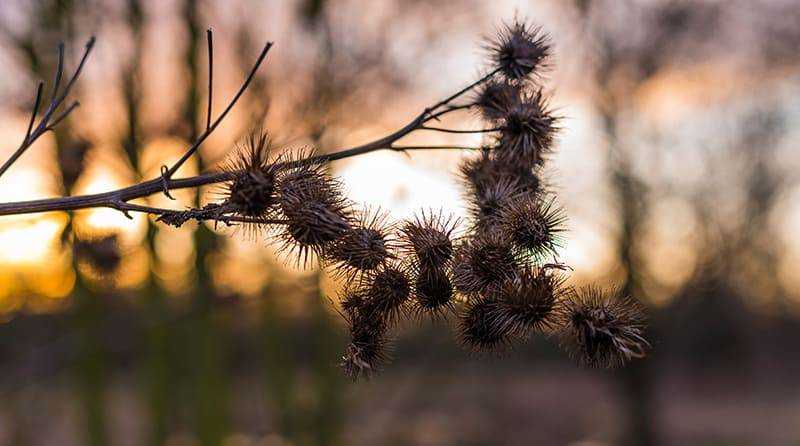
Culinary use of Burdock began and remains strongest in East Asia – namely China, Korea, and Japan. The root in particular (known as “gobo” in Japan) has been well folded into the food traditions of that area.
Burdock’s widest influence just might be on our clothing: the story goes that Swedish inventor George de Mestral used Burdock’s burrs (stuck in his dog’s fur after a hunting trip) as his inspiration to create what we now call Velcro.
Propagation of Burdock
Site Selection (Zones 2-10)
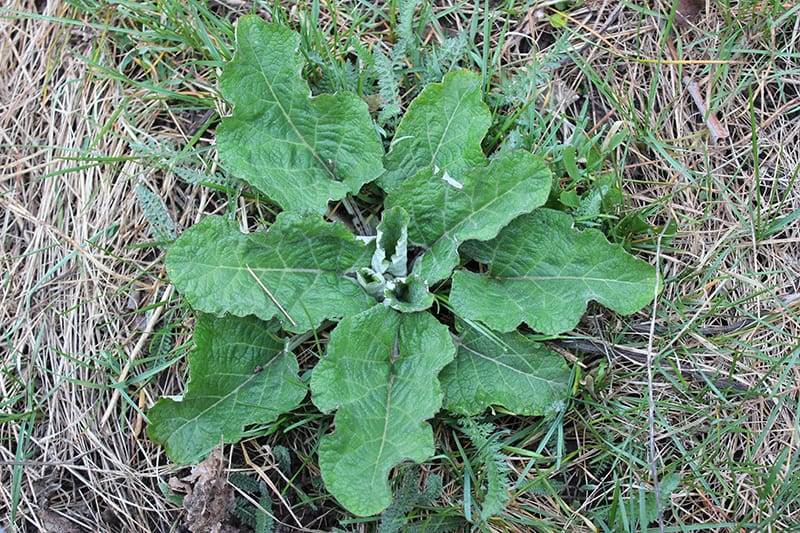
I can’t in good conscience recommend that you actively plant burdock without stressing that it can very easily become a weed. Choosing to reframe the plant as a beneficial addition to your garden means also agreeing to manage it closely.
Burdock finds a way to thrive in many different kinds of soils, but really takes off in nitrogen-rich earth. Particularly if you are interested in harvesting its roots, choose a site with sandy loam soils – no need to enrich them. Some care can be taken in heavier soils to amend and lighten them with wood chips, peat, etc.
Burdock prefers full sun to partial shade. Our patch grows in the shade of a sugar maple tree, probably less sun than it would like, and I’ve noticed it puts up fewer flower stalks as a result. How’s that for passive management?
Once that tap root gets established, Burdock becomes fairly drought tolerant. Until then, the one inch of water per week rule of thumb applies. Avoid planting Burdock near other deeply-rooted plants that it will act in competition with. Consider relatively shallow-rooted and still hearty plants like asparagus or clover for companions.
Planting Burdock by Seed (Recommended)
Burdock seed is beginning to be sold more widely, now that the root is more recognized both medicinally and culinarily – and commercially. Burdock varieties available from a company like Johnny’s Seed Company have been selected for root growth and ease of harvest.
Alternatively, you can collect seed; in Burdock’s case, the seeds collect you! Prying and shaking them from within the spiny seed head is an itchy job, but can certainly be done. Seeds need to be stratified before planting.
After your last frost, sow seeds ½” deep with at 6-8” spacing (thin later to 18-24”). Keep the area well watered. Germination tends to be reliable, and happens within a week or two.
Easy to Grow, Difficult to Contain
Once Burdock is established, it’s quite simple to grow. You may notice that slugs take an interest in the young leaves, but that’s about it for pest or disease challenges.
Getting into a rhythm of selectively harvesting roots in the Spring and chopping back flowering stalks before they’ve gone to seed in the late-Summer/Fall allows you to reap the benefits of this powerful plant without letting it overtake your garden.
Harvesting Burdock
Root
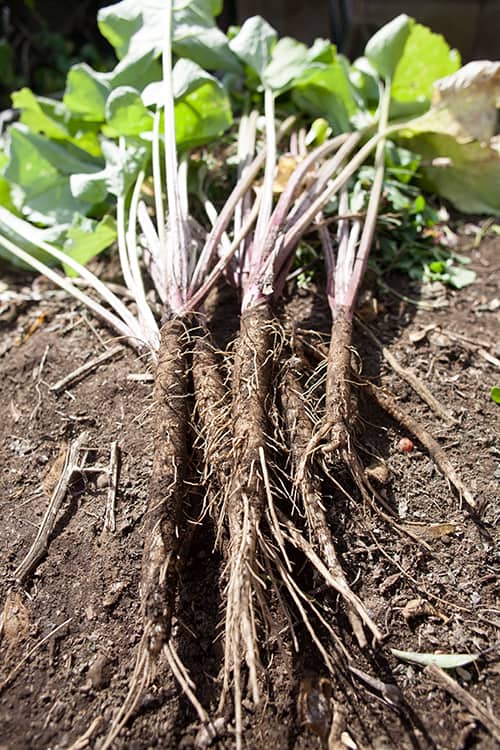
Roots should be harvested in late-Fall of the plant’s first year into the next Spring. After that, Burdock is putting energy into its flowering, and the root becomes tough and extra bitter.
Harvesting Burdock root is a lesson in patience and finesse (and sometimes frustration). Waiting for a good rain to soften the ground really helps. I harvest burdock in a similar way to sweet potatoes – with a sturdy garden fork. Loosen the earth in an 8” radius around the plant, pry back and forth gently, and then dig the remaining soil away from the root. If it extends very deeply, a narrow spade could also be helpful. We scrub the roots right after harvesting, even if we’re going to store them. The soil seems to come off easiest first-thing.
Young Stems & Stalks
Young stems can be harvested, peeled, and boiled for eating. Be sure to pick them before the plant has gone to flower. The stems turn very fibrous at that point.
Young Leaves
Most contemporary information I’ve found on eating Burdock leaves says that the young leaves are technically edible, but often unpalatable. My own experience confirms this! It could be a question of preparation, however. Many recipes recommend repeated boilings to remove the bitterness.
Multiple Uses of the Burdock Plant
Culinary Usage

The root of the Burdock plant is delicious, and a great substitute for potatoes or parsnips. Enjoy it cooked in a soup or baked in a dish of roasted veggies. It can also be grated into salads. The most unique way I’ve ever had Burdock root was grated in a batch of sauerkraut. Its sweet earthiness was the perfect complement to the sour salty kraut.
Medicinal Properties of Burdock
Burdock joins a group of herbs known for the detoxifying, and particularly liver-cleansing, power of their roots (Chicory and Dandelion are a couple of others). I don’t think it’s a coincidence that these roots are prime for harvest as humans in many parts of the world emerge from the depths of Winter. It’s at this time that we feel most in need of a system reset, from the inside out.
My late Winter go-to is a Burdock root tea. It can be made from fresh or dried root, and is a fantastic tonic:
Add 1-2 tsp dried root or 1 Tbsp fresh root to 2 cups of boiling water. Steep at least 15 minutes, or leave overnight to extract more of the nutritive benefit of the herb. Sweeten with honey if desired.
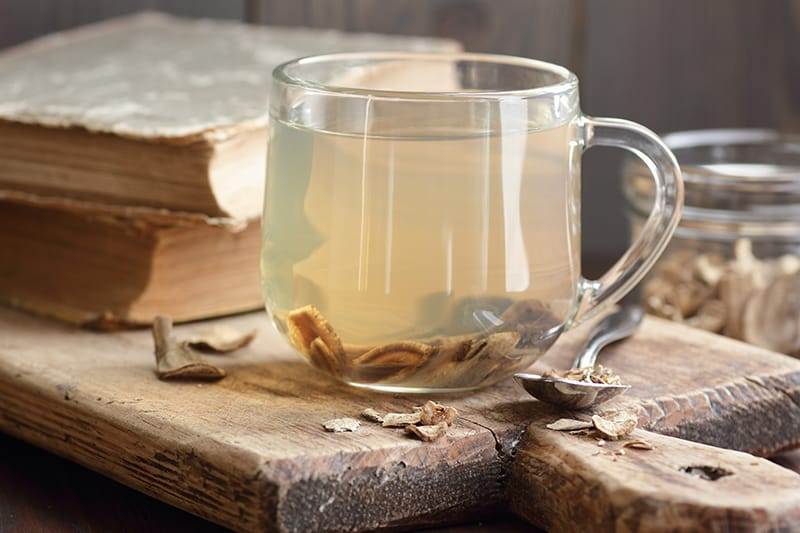
The tinctured root is also detoxifying, and a bit stronger than the tea. This we use towards specific purposes – to clear up a digestive issue or a case of eczema. Scrub the fresh root well to remove all dirt. Chop finely, and fill a mason jar to ⅓ full. Fill the rest of the jar with a high-proof neutral alcohol (we use 80 proof vodka), and seal with a lid. Keep in a cool dark spot, and agitate the jar daily for 6 weeks. Strain the solids out, and transfer to a dropper bottle. I’ve found that ~15 drops/day offers relief within a week, but everyone will have different experiences and interactions.
Burdock leaves can be used externally to soothe skin eruptions, acne, and eczema. The seeds are also prevalent in traditional Chinese healing, and are thought to be the most medicinally potent part of the plant.
A reminder: Burdock is known to be both a diuretic and a uterine stimulant. There are some populations, including pregnant women, that should steer clear of using Burdock. Always consult with a medical professional before taking herbs medicinally.
Chop and Drop Mulch
Take advantage of Burdock’s sometimes giant leaves (and all of the nutrients they’ve accumulated) by chopping them for a quick mulch. Be advised: Some people find the leaves agitating to the skin.
Pollinator Species
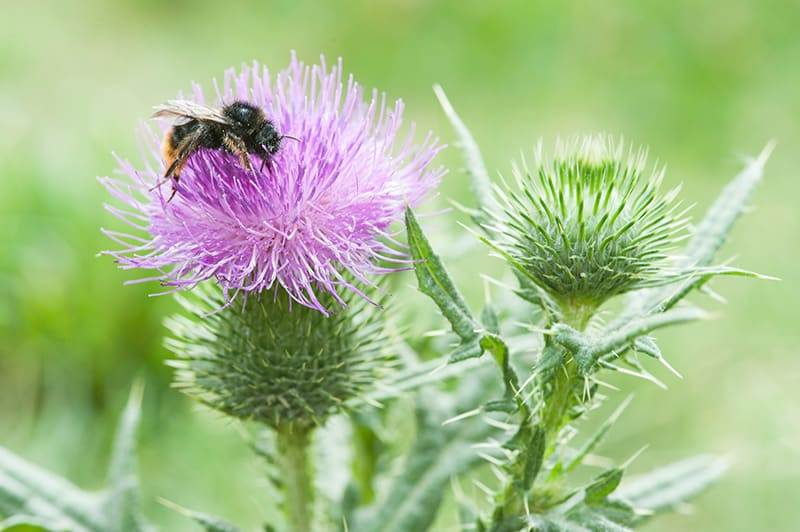
Burdock flowers draw in long-tongued bees and butterflies. The foliage and stems also offer food and shelter for the caterpillars of many species of butterflies.
Closing Thoughts
The ways we think about plants as beautiful, beneficial, weedy, or invasive might say a lot more about us than the plants themselves. Burdock’s co-evolution with humans seems to have left us with a hung jury: Is this plant an incredible healer? OR a horrible pest? It just might be both! The choice to purposefully cultivate Burdock should be done with thoughtful consideration. But I think it’s easy to appreciate the power and pungency of this “mischievous plant.”
